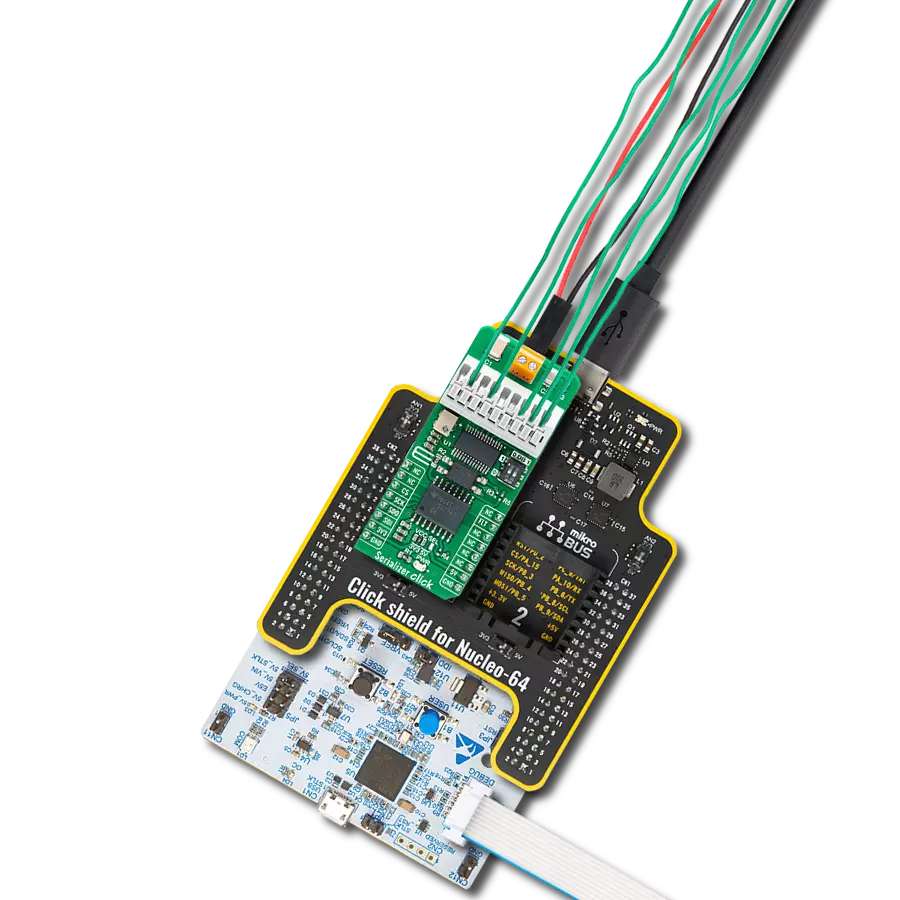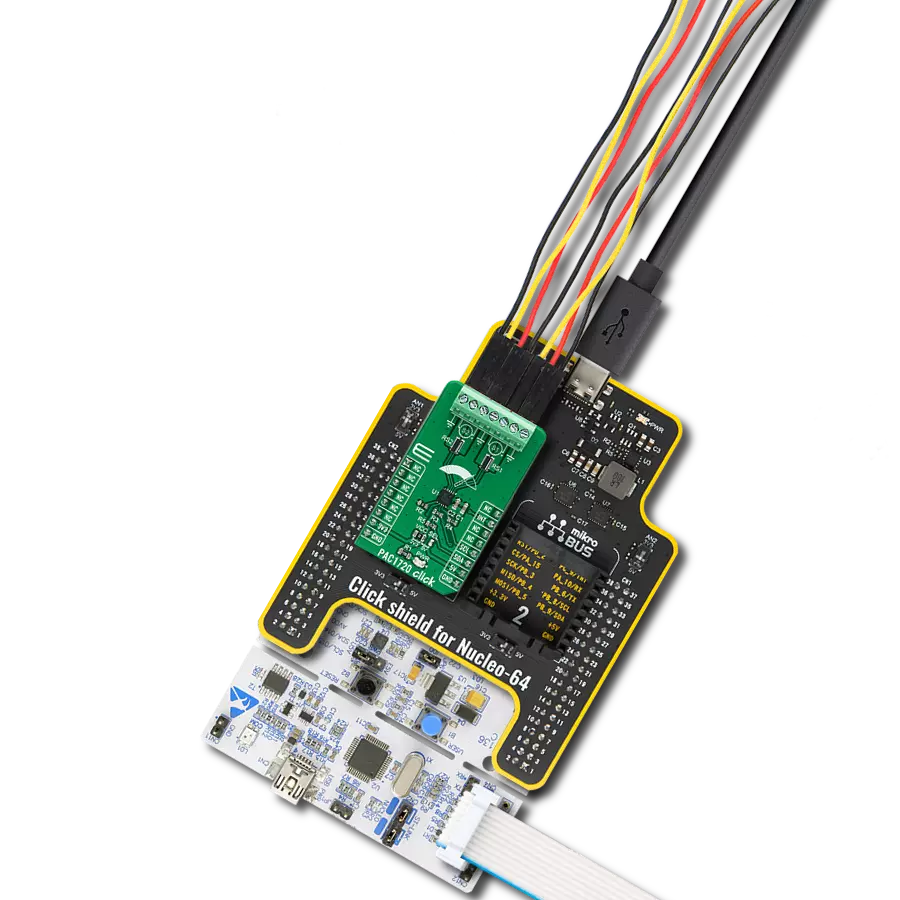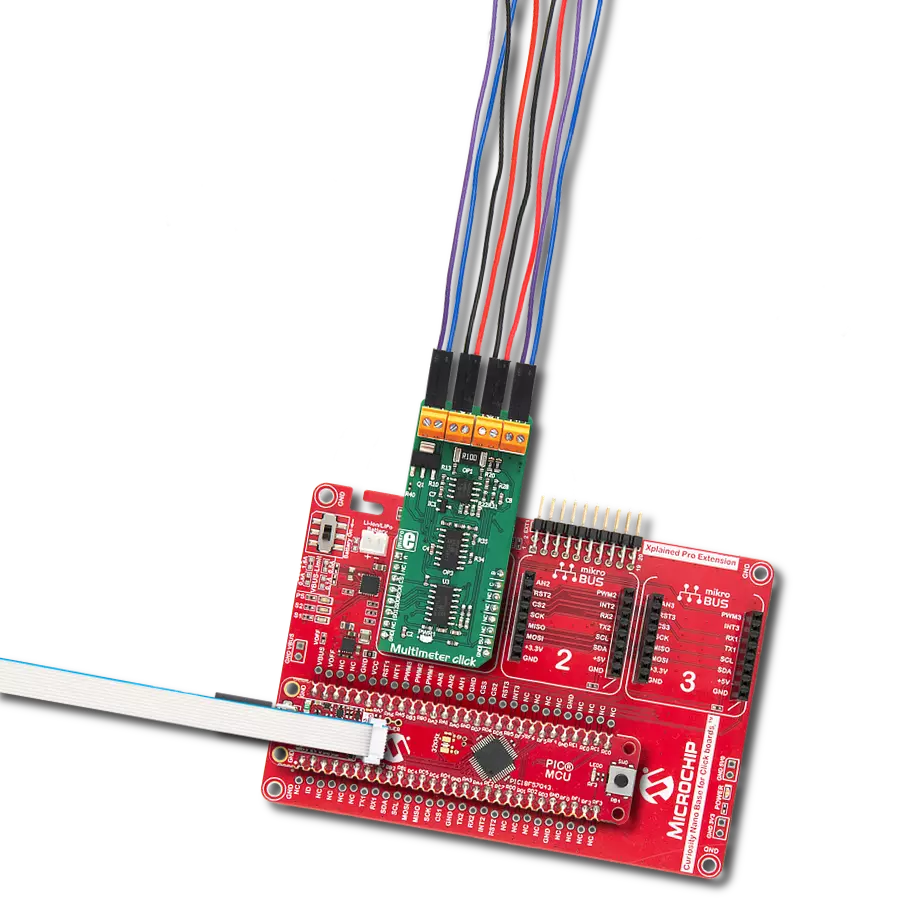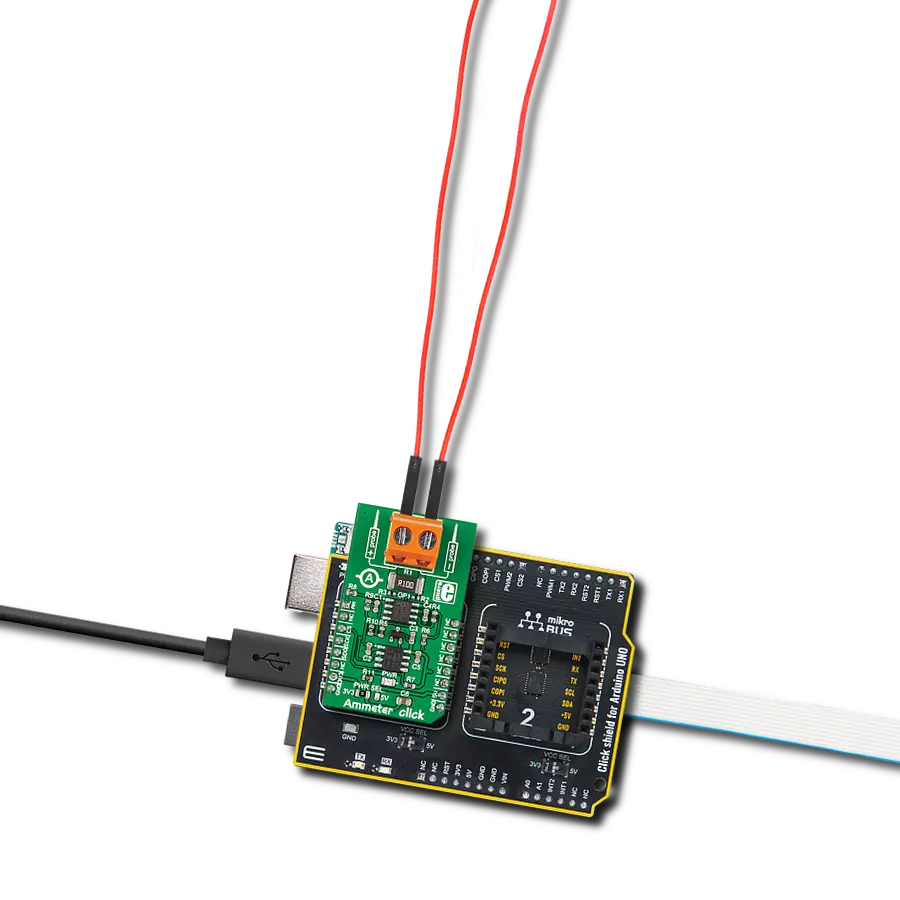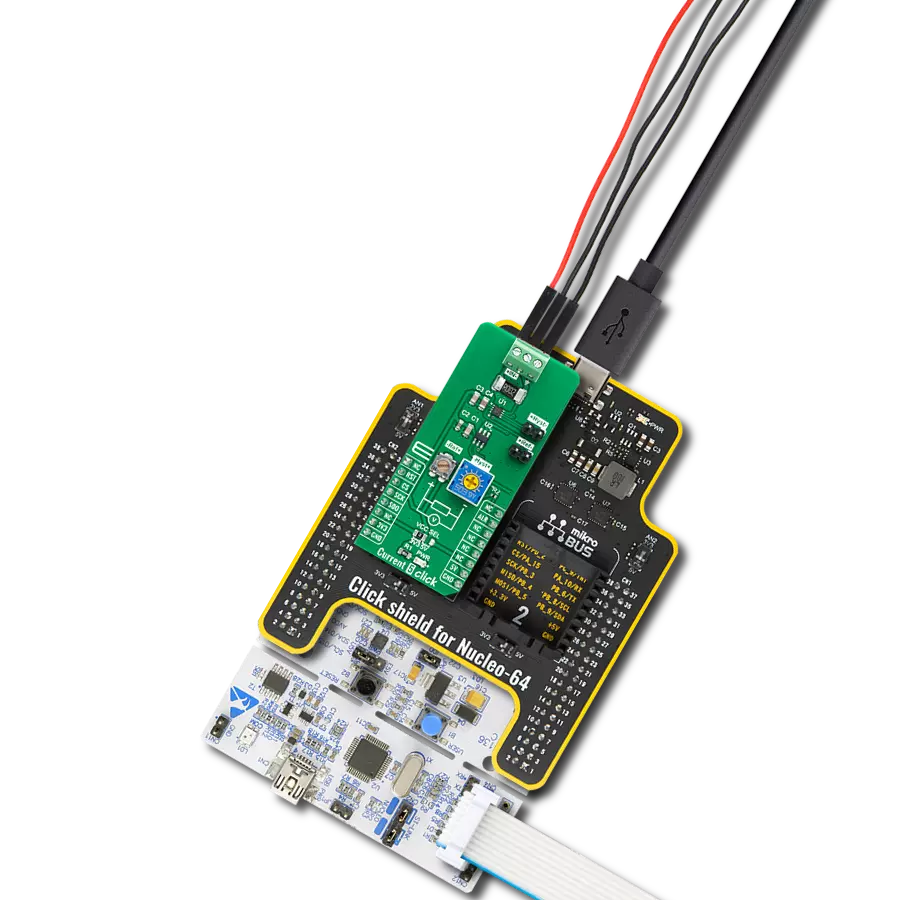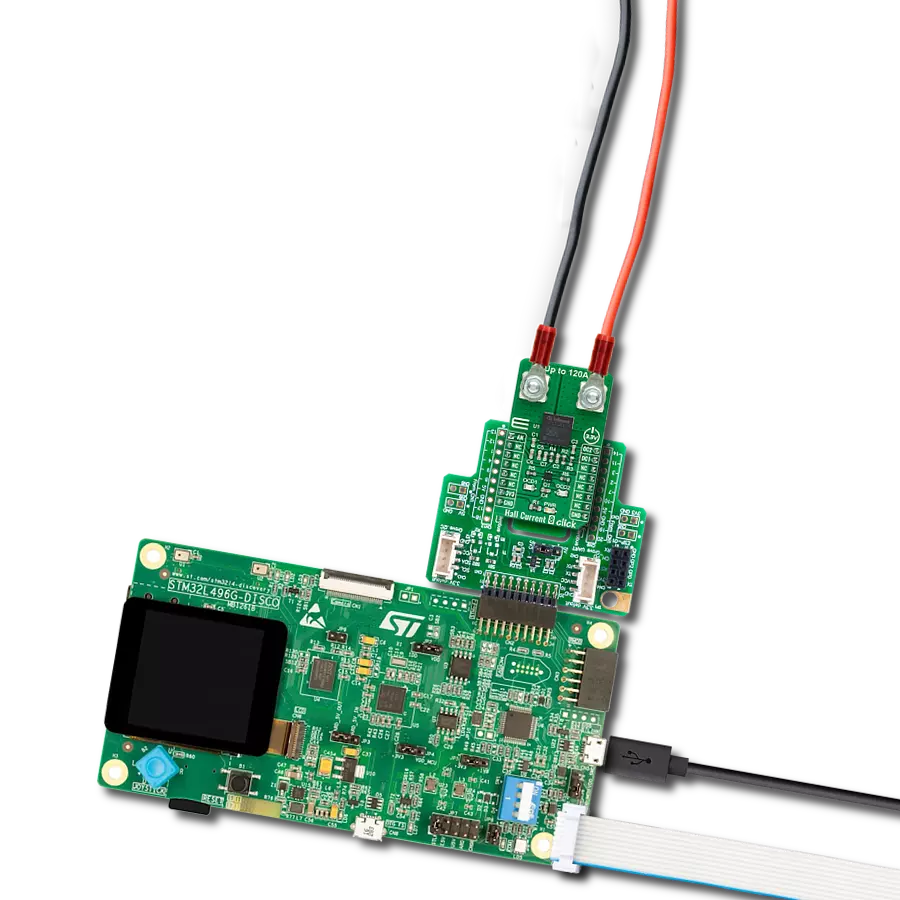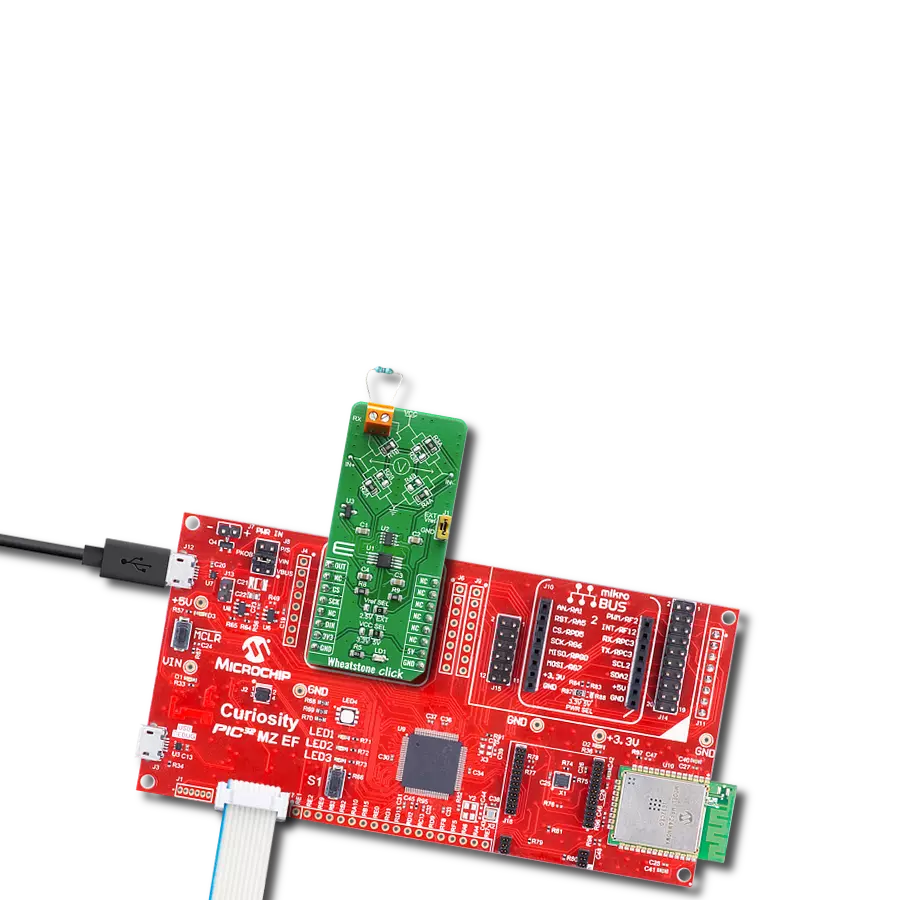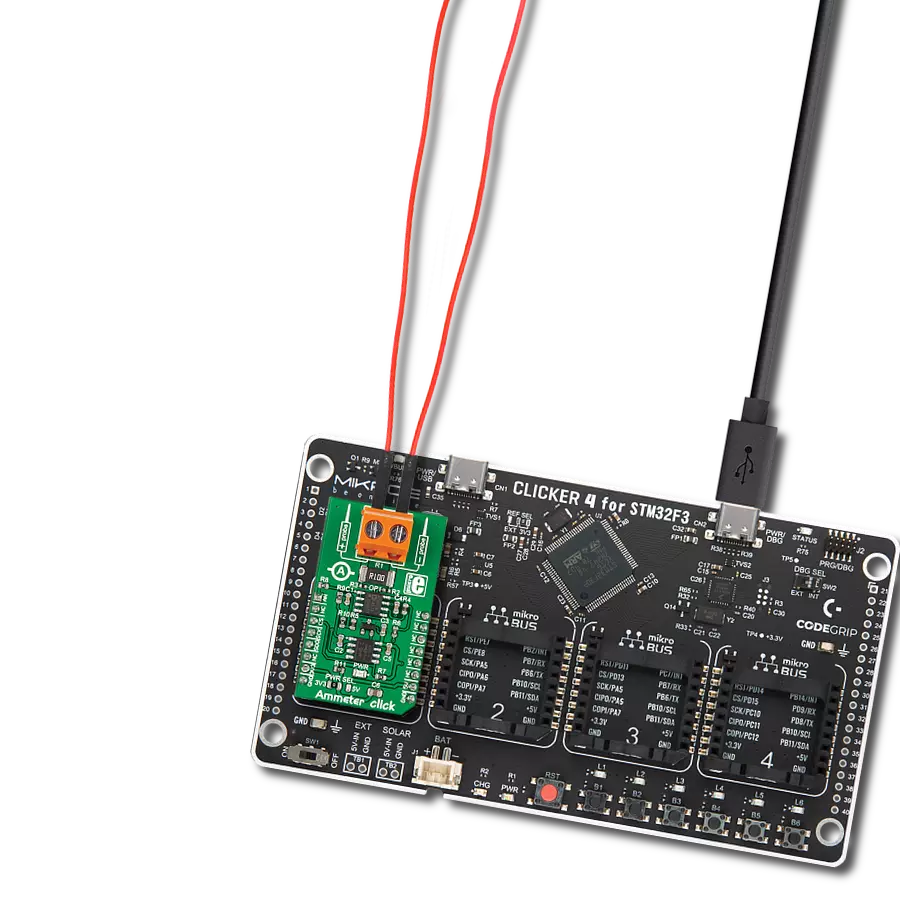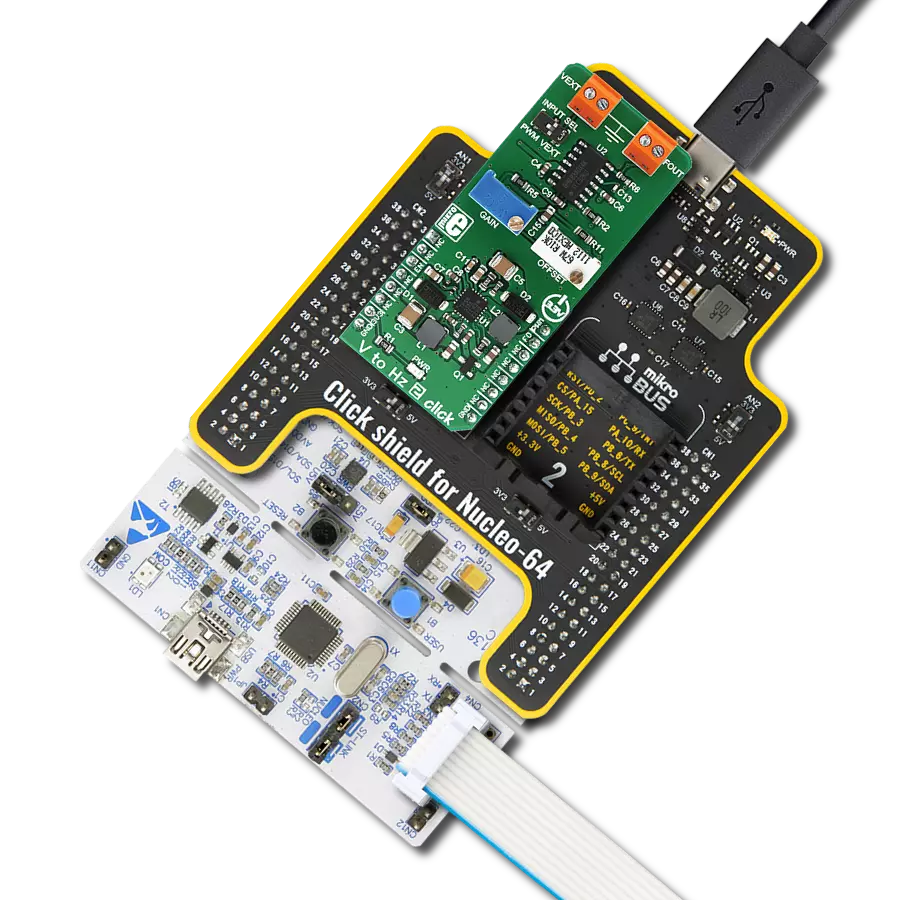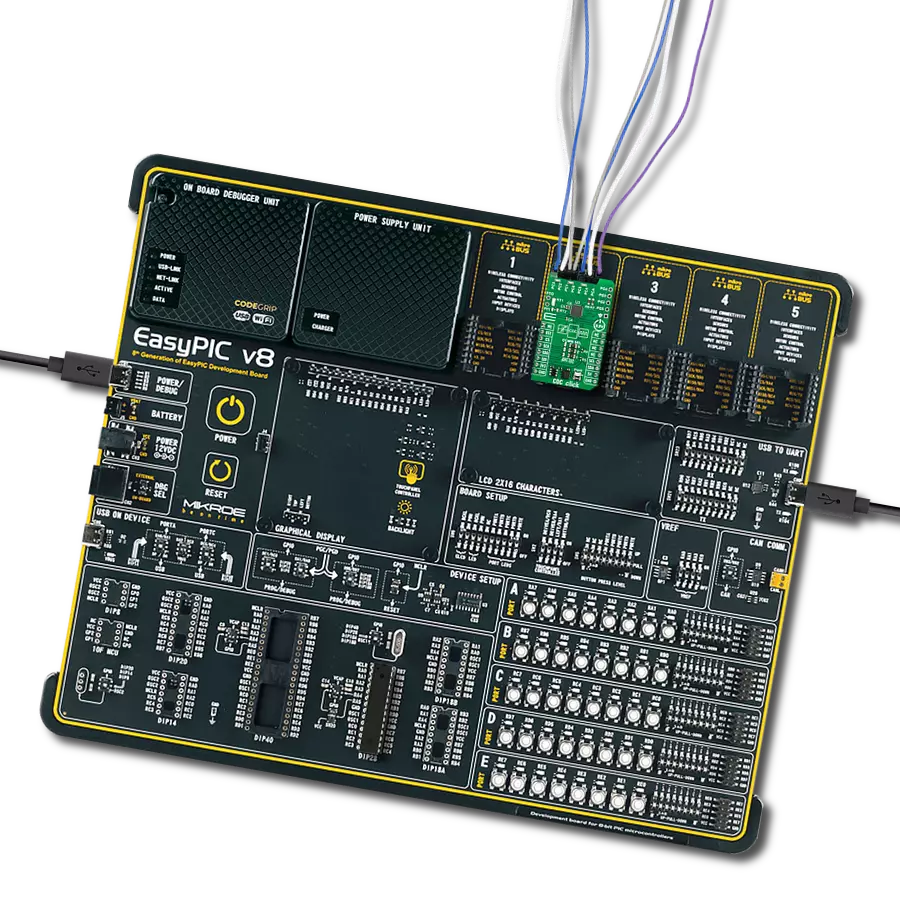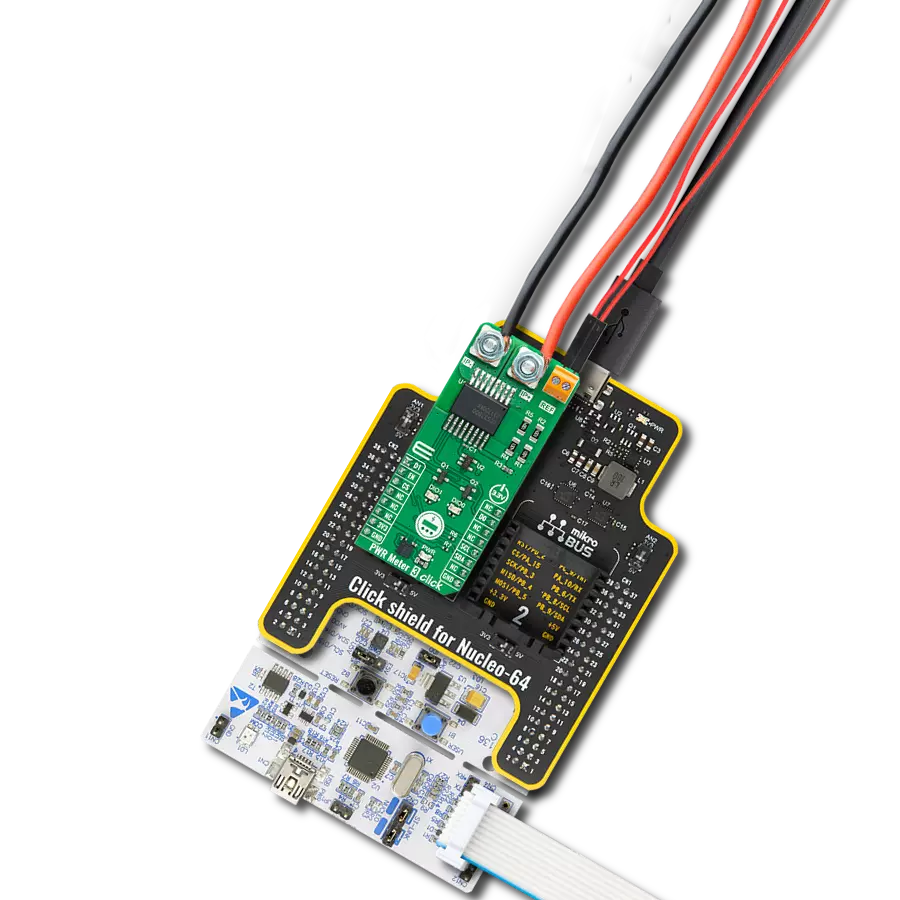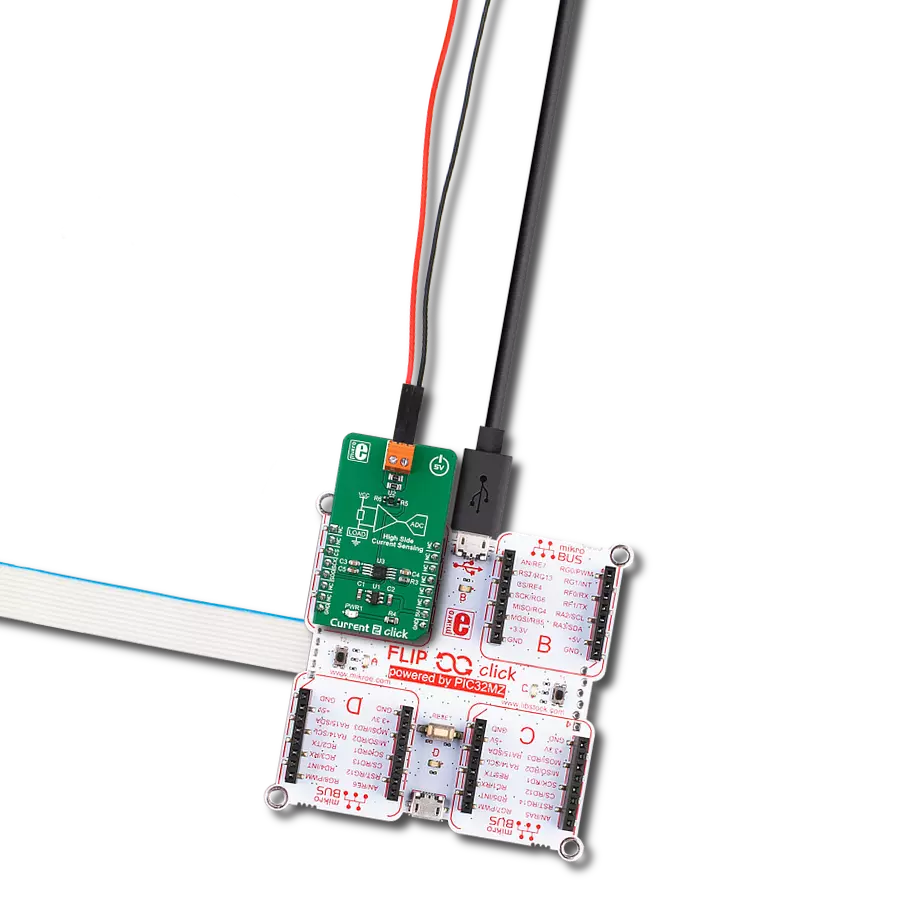Accurately measure the amount of oxygen dissolved in liquids like water, and enjoy tasks such as monitoring water quality in aquariums or conducting scientific experiments where precise oxygen measurement is crucial
A
A
Hardware Overview
How does it work?
EZO Carrier Click - Oxygen is based on the EZO-DO™, an ISO 5814 compliant embedded dissolved oxygen circuit board from Atlas Scientific. It allows you to interface any galvanic measurement probe, which determines the dissolved oxygen of a liquid in your application, by sinking the probe into the solvent you want to measure the oxygen. The EZO Carrier Click - Oxygen comes with the BNC connector for interfacing the appropriate probe, which MIKROE also offers. The EZO-DO™ needs to be isolated from the host MCU; therefore, this Click™ board comes with the Si8400AB, a bidirectional isolator from Skyworks. The isolator provides standard bidirectional and I2C communication with a clock frequency of up to 1.7MHz. The EZO-DO™ circuit is a very sensitive
device, and the sensitivity is what gives this circuit its accuracy. It can read micro-voltages that are bleeding into the water from unnatural sources such as pumps, solenoid valves, or other probes/sensors. So, to eliminate the electrical noise, besides the Si8400AB isolator, the power supply voltage is also isolated. For this purpose, this Click™ board is equipped with the ROE-0505S, a DC/DC converter from Recom. The EZO-DO™ has a flexible calibration protocol allowing for single-point, two-point, or three-point calibration. The temperature compensation should be taken into account. The EZO-DO™ features sleep mode, continuous operation, find function, export/import calibration, on-module status LED, and many more features. EZO Carrier Click - Oxygen can use a
standard 2-wire UART interface to communicate with the host MCU with the default baud rate of 9600bps. While using the UART interface, you can use the library we provide or a simple ASCII set of commands. You can also choose a standard 2-wire I2C interface over the COMM SEL jumpers. This Click board™ can operate with either 3.3V or 5V logic voltage levels selected via the VCC SEL jumper. This way, both 3.3V and 5V capable MCUs can use the communication lines properly. Also, this Click board™ comes equipped with a library containing easy-to-use functions and an example code that can be used as a reference for further development.
Features overview
Development board
Fusion for TIVA v8 is a development board specially designed for the needs of rapid development of embedded applications. It supports a wide range of microcontrollers, such as different 32-bit ARM® Cortex®-M based MCUs from Texas Instruments, regardless of their number of pins, and a broad set of unique functions, such as the first-ever embedded debugger/programmer over a WiFi network. The development board is well organized and designed so that the end-user has all the necessary elements, such as switches, buttons, indicators, connectors, and others, in one place. Thanks to innovative manufacturing technology, Fusion for TIVA v8 provides a fluid and immersive working experience, allowing access
anywhere and under any circumstances at any time. Each part of the Fusion for TIVA v8 development board contains the components necessary for the most efficient operation of the same board. An advanced integrated CODEGRIP programmer/debugger module offers many valuable programming/debugging options, including support for JTAG, SWD, and SWO Trace (Single Wire Output)), and seamless integration with the Mikroe software environment. Besides, it also includes a clean and regulated power supply module for the development board. It can use a wide range of external power sources, including a battery, an external 12V power supply, and a power source via the USB Type-C (USB-C) connector.
Communication options such as USB-UART, USB HOST/DEVICE, CAN (on the MCU card, if supported), and Ethernet is also included. In addition, it also has the well-established mikroBUS™ standard, a standardized socket for the MCU card (SiBRAIN standard), and two display options for the TFT board line of products and character-based LCD. Fusion for TIVA v8 is an integral part of the Mikroe ecosystem for rapid development. Natively supported by Mikroe software tools, it covers many aspects of prototyping and development thanks to a considerable number of different Click boards™ (over a thousand boards), the number of which is growing every day.
Microcontroller Overview
MCU Card / MCU
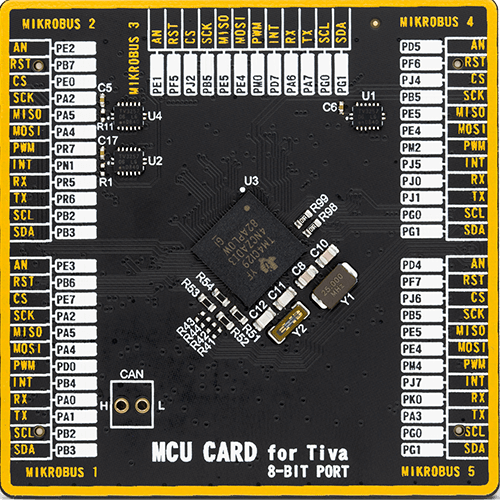
Type
8th Generation
Architecture
ARM Cortex-M4
MCU Memory (KB)
1024
Silicon Vendor
Texas Instruments
Pin count
212
RAM (Bytes)
262144
You complete me!
Accessories
The Atlas Scientific conductivity probe, known as Probe K, stands out for its stable and precise readings across a wide range of conductivity. Free from fringe effects, it ensures accuracy within a range of 5 to 200,000μS/cm, with an impressive accuracy of ±2%. Responding swiftly, it achieves 90% accuracy in just 1 second, making it ideal for real-time monitoring applications. With a broad temperature range from 1 to 110°C, it can withstand diverse environmental conditions. Its robust construction allows for a maximum pressure of 3,447kPa (500PSI) and a maximum depth of 352 meters (1,157 feet). A 1-meter cable provides installation flexibility. Probe K boasts a long recalibration interval of approximately ten years, aligning with its equally impressive life expectancy. Probe K ensures reliable conductivity measurements for a decade and beyond with these features.
Used MCU Pins
mikroBUS™ mapper
Take a closer look
Click board™ Schematic

Step by step
Project assembly
Software Support
Library Description
This library contains API for EZO Carrier Click - Oxygen Click driver.
Key functions:
ezocarrierdo_send_cmd- Send command functionezocarrierdo_send_cmd_with_par- Send command function with parameterezocarrierdo_send_cmd_check- Check the sent command
Open Source
Code example
The complete application code and a ready-to-use project are available through the NECTO Studio Package Manager for direct installation in the NECTO Studio. The application code can also be found on the MIKROE GitHub account.
/*!
* @file main.c
* @brief EZO Carrier DO Click Example.
*
* # Description
* This example demonstrates the use of EZO Carrier DO Click board by processing
* the incoming data and displaying them on the USB UART.
*
* The demo application is composed of two sections :
*
* ## Application Init
* Initializes the driver, performs the Click default factory reset, and high point calibration.
*
* ## Application Task
* Reads and processes all incoming dissolved oxygen data from the probe, and displays them on the USB UART in mg/L.
*
* ## Additional Function
* - static void ezocarrierdo_clear_app_buf ( void )
* - static void ezocarrierdo_log_app_buf ( void )
* - static err_t ezocarrierdo_process ( ezocarrierdo_t *ctx )
* - static err_t ezocarrierdo_rsp_check ( ezocarrierdo_t *ctx, uint8_t *rsp )
* - static void ezocarrierdo_error_check ( err_t error_flag )
*
* @author Stefan Ilic
*
*/
#include "board.h"
#include "log.h"
#include "ezocarrierdo.h"
// Application buffer size
#define APP_BUFFER_SIZE 200
#define PROCESS_BUFFER_SIZE 200
static ezocarrierdo_t ezocarrierdo;
static log_t logger;
static uint8_t app_buf[ APP_BUFFER_SIZE ] = { 0 };
static int32_t app_buf_len = 0;
static err_t error_flag;
/**
* @brief EZO Carrier DO clearing application buffer.
* @details This function clears memory of application buffer and reset its length.
* @note None.
*/
static void ezocarrierdo_clear_app_buf ( void );
/**
* @brief EZO Carrier DO log application buffer.
* @details This function logs data from application buffer to USB UART.
* @note None.
*/
static void ezocarrierdo_log_app_buf ( void );
/**
* @brief EZO Carrier DO data reading function.
* @details This function reads data from device and concatenates data to application buffer.
* @param[in] ctx : Click context object.
* See #ezocarrierdo_t object definition for detailed explanation.
* @return @li @c 0 - Read some data.
* @li @c -1 - Nothing is read.
* See #err_t definition for detailed explanation.
* @note None.
*/
static err_t ezocarrierdo_process ( ezocarrierdo_t *ctx );
/**
* @brief Response check.
* @details This function checks for response and
* returns the status of response.
* @param[in] rsp Expected response.
* @return @li @c 0 - OK response.
* @li @c -1 - Error response.
* @li @c -2 - Timeout error.
* See #err_t definition for detailed explanation.
*/
static err_t ezocarrierdo_rsp_check ( ezocarrierdo_t *ctx, uint8_t *rsp );
/**
* @brief Check for errors.
* @details This function checks for different types of
* errors and logs them on UART or logs the response if no errors occured.
* @param[in] error_flag Error flag to check.
*/
static void ezocarrierdo_error_check ( err_t error_flag );
void application_init ( void )
{
log_cfg_t log_cfg; /**< Logger config object. */
ezocarrierdo_cfg_t ezocarrierdo_cfg; /**< Click config object. */
/**
* Logger initialization.
* Default baud rate: 115200
* Default log level: LOG_LEVEL_DEBUG
* @note If USB_UART_RX and USB_UART_TX
* are defined as HAL_PIN_NC, you will
* need to define them manually for log to work.
* See @b LOG_MAP_USB_UART macro definition for detailed explanation.
*/
LOG_MAP_USB_UART( log_cfg );
log_init( &logger, &log_cfg );
log_info( &logger, " Application Init " );
// Click initialization.
ezocarrierdo_cfg_setup( &ezocarrierdo_cfg );
EZOCARRIERDO_MAP_MIKROBUS( ezocarrierdo_cfg, MIKROBUS_1 );
if ( UART_ERROR == ezocarrierdo_init( &ezocarrierdo, &ezocarrierdo_cfg ) )
{
log_error( &logger, " Communication init." );
for ( ; ; );
}
log_printf( &logger, "Device status \r\n" );
ezocarrierdo_send_cmd( &ezocarrierdo, EZOCARRIERDO_CMD_STATUS );
error_flag = ezocarrierdo_rsp_check( &ezocarrierdo, EZOCARRIERDO_RSP_OK );
ezocarrierdo_error_check( error_flag );
log_printf( &logger, "Factory reset \r\n" );
ezocarrierdo_send_cmd( &ezocarrierdo, EZOCARRIERDO_CMD_FACTORY );
error_flag = ezocarrierdo_rsp_check( &ezocarrierdo, EZOCARRIERDO_RSP_READY );
ezocarrierdo_error_check( error_flag );
log_printf( &logger, "Device info \r\n" );
ezocarrierdo_send_cmd( &ezocarrierdo, EZOCARRIERDO_CMD_DEV_INFO );
error_flag = ezocarrierdo_rsp_check( &ezocarrierdo, EZOCARRIERDO_RSP_OK );
ezocarrierdo_error_check( error_flag );
uint8_t n_cnt = 0;
uint8_t last_reading[ APP_BUFFER_SIZE ] = { 0 };
ezocarrierdo_clear_app_buf( );
ezocarrierdo_send_cmd( &ezocarrierdo, EZOCARRIERDO_CMD_SINGLE_READ );
ezocarrierdo_process ( &ezocarrierdo );
strcpy( last_reading, app_buf );
log_printf( &logger, "High point calibration \r\n" );
log_printf( &logger, "Waiting for stable readings \r\n" );
while ( n_cnt <= 5 )
{
if ( EZOCARRIERDO_OK == ezocarrierdo_process ( &ezocarrierdo ) )
{
if ( 0 == strstr( app_buf, last_reading ) )
{
n_cnt++;
}
else
{
strcpy( last_reading, app_buf );
n_cnt = 0;
}
}
log_printf( &logger, "- " );
Delay_ms ( 1000 );
ezocarrierdo_clear_app_buf( );
}
log_printf( &logger, "\r\n Calibration \r\n" );
ezocarrierdo_send_cmd( &ezocarrierdo, EZOCARRIERDO_CMD_CAL );
error_flag = ezocarrierdo_rsp_check( &ezocarrierdo, EZOCARRIERDO_RSP_OK );
ezocarrierdo_error_check( error_flag );
#define DISABLE_CONT_READ "0"
log_printf( &logger, "Disable continuous reading mode \r\n" );
ezocarrierdo_send_cmd_with_par( &ezocarrierdo, EZOCARRIERDO_CMD_CONT_READ, DISABLE_CONT_READ );
error_flag = ezocarrierdo_rsp_check( &ezocarrierdo, EZOCARRIERDO_RSP_OK );
ezocarrierdo_error_check( error_flag );
log_info( &logger, " Application Task " );
}
void application_task ( void )
{
log_printf( &logger, "Reading... \r\n" );
ezocarrierdo_send_cmd( &ezocarrierdo, EZOCARRIERDO_CMD_SINGLE_READ );
error_flag = ezocarrierdo_rsp_check( &ezocarrierdo, EZOCARRIERDO_RSP_OK );
ezocarrierdo_error_check( error_flag );
Delay_ms ( 1000 );
Delay_ms ( 1000 );
Delay_ms ( 1000 );
Delay_ms ( 1000 );
Delay_ms ( 1000 );
}
int main ( void )
{
/* Do not remove this line or clock might not be set correctly. */
#ifdef PREINIT_SUPPORTED
preinit();
#endif
application_init( );
for ( ; ; )
{
application_task( );
}
return 0;
}
static void ezocarrierdo_clear_app_buf ( void )
{
memset( app_buf, 0, app_buf_len );
app_buf_len = 0;
}
static void ezocarrierdo_log_app_buf ( void )
{
for ( int32_t buf_cnt = 0; buf_cnt < app_buf_len; buf_cnt++ )
{
log_printf( &logger, "%c", app_buf[ buf_cnt ] );
}
}
static err_t ezocarrierdo_process ( ezocarrierdo_t *ctx )
{
uint8_t rx_buf[ PROCESS_BUFFER_SIZE ] = { 0 };
int32_t overflow_bytes = 0;
int32_t rx_cnt = 0;
int32_t rx_size = ezocarrierdo_generic_read( ctx, rx_buf, PROCESS_BUFFER_SIZE );
if ( ( rx_size > 0 ) && ( rx_size <= APP_BUFFER_SIZE ) )
{
if ( ( app_buf_len + rx_size ) > APP_BUFFER_SIZE )
{
overflow_bytes = ( app_buf_len + rx_size ) - APP_BUFFER_SIZE;
app_buf_len = APP_BUFFER_SIZE - rx_size;
memmove ( app_buf, &app_buf[ overflow_bytes ], app_buf_len );
memset ( &app_buf[ app_buf_len ], 0, overflow_bytes );
}
for ( rx_cnt = 0; rx_cnt < rx_size; rx_cnt++ )
{
if ( rx_buf[ rx_cnt ] )
{
app_buf[ app_buf_len++ ] = rx_buf[ rx_cnt ];
}
}
return EZOCARRIERDO_OK;
}
return EZOCARRIERDO_ERROR;
}
static err_t ezocarrierdo_rsp_check ( ezocarrierdo_t *ctx, uint8_t *rsp )
{
uint32_t timeout_cnt = 0;
uint32_t timeout = 10000;
err_t error_flag = EZOCARRIERDO_OK;
ezocarrierdo_clear_app_buf( );
while ( ( 0 == strstr( app_buf, rsp ) ) &&
( 0 == strstr( app_buf, EZOCARRIERDO_RSP_ERROR ) ) )
{
error_flag |= ezocarrierdo_process( ctx );
if ( timeout_cnt++ > timeout )
{
ezocarrierdo_clear_app_buf( );
return EZOCARRIERDO_ERROR_TIMEOUT;
}
Delay_ms ( 1 );
}
Delay_ms ( 100 );
error_flag |= ezocarrierdo_process( ctx );
if ( strstr( app_buf, rsp ) )
{
return EZOCARRIERDO_OK;
}
else if ( strstr( app_buf, EZOCARRIERDO_RSP_ERROR ) )
{
return EZOCARRIERDO_ERROR;
}
else
{
return EZOCARRIERDO_ERROR;
}
}
static void ezocarrierdo_error_check ( err_t error_flag )
{
switch ( error_flag )
{
case EZOCARRIERDO_OK:
{
ezocarrierdo_log_app_buf( );
break;
}
case EZOCARRIERDO_ERROR:
{
log_error( &logger, " Error!" );
break;
}
case EZOCARRIERDO_ERROR_TIMEOUT:
{
log_error( &logger, " Timeout!" );
break;
}
default:
{
log_error( &logger, " Unknown!" );
break;
}
}
log_printf( &logger, "- - - - - - - - - - - - - - -\r\n" );
Delay_ms ( 500 );
}
// ------------------------------------------------------------------------ END
Additional Support
Resources
Category:Measurements



















